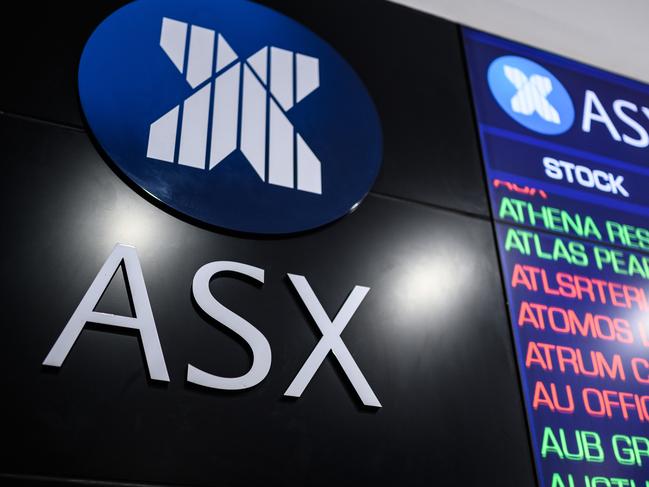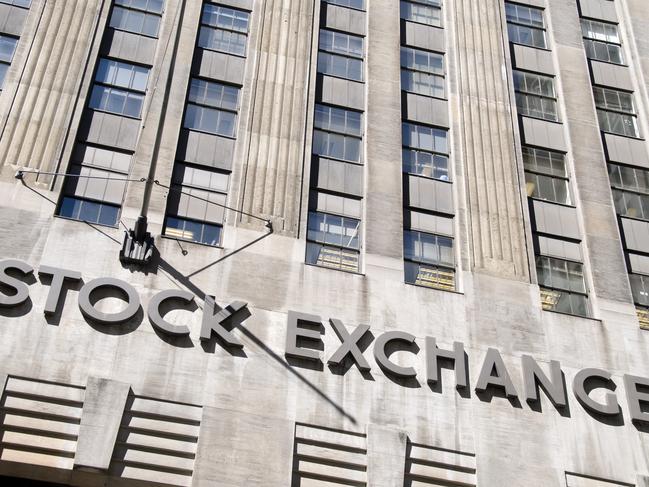ASX opens higher despite market volatility as Wall Street flags changes to trading
The Australian share market has shaken off a weak lead from Wall Street to hold on to its early gain, ahead of further economic support measures for businesses during the COVID-19 pandemic.
News
Don't miss out on the headlines from News. Followed categories will be added to My News.
The Australian share market has held on to its early gains as the government prepares to announce further economic support measures for businesses amid the COVID-19 pandemic.
The S&P/ASX200 benchmark index remained volatile in morning trade early and was up 69.9 points, or 1.44 per cent at 4,912.3 by midday today, ahead of expected federal government stimulus measures.
The All Ordinaries index was also up at midday, rising 61.8 points, or 1.27 per cent, to 4,936.0.
A strong start for supermarkets, healthcare stocks and banking giants helped offset a decline across energy, materials, and industrial shares. Coles jumped 2.86 per cent to $16.18 and Woolworths climbed 2.59 per cent to $35.70, while conglomerate Wesfarmers was up 2.88 per cent to $33.18.

A fresh round of social distancing measures was introduced on Sunday. Prime Minister Scott Morrison said no more than two people will be allowed to meet in public or private and older Australians should stay at home to slow the spread of coronavirus.
Australians have been urged to stay at home unless they are working, studying, attending medical appointments or collecting essential supplies. CBA rose 3.66 per cent to $59.77 and Westpac was up 3.09 per cent to $15.35 as the financial sector gained by a collective 2.42 per cent.
NAB shares rose 1.19 per cent to $15.30, ANZ was up 1.68 per cent to $15.73 and Macquarie Group lifted 2.02 per cent to $81.625.
The Australian Banking Association on Monday announced lenders will be extending the six-month deferral of loans to 30,000 more businesses to help them cope with the COVID-19 pandemic.
The additional measure will see the repayment deferrals expanded to businesses with loans up to $10 million, up from $3 million previously. Miners Rio Tinto and BHP fell in early trade – down 1.91 per cent and 2.79 per cent respectively.
Energy sector recovered somewhat from earlier losses but Santos was still down 4.4 per cent and Origin down 0.69 per cent.
Biotech giant CSL added even more to its early gains, gaining 5.01 per cent to $293.10.
Fellow healthcare stocks Sonic Healthcare and Ramsay Health Care also booked strong gains of 4.42 per cent and 3.66 per cent, respectively. Treasurer Josh Frydenberg, meanwhile, on Monday is set to announce wage subsidies for businesses to help keep employees on during the coronavirus pandemic.
But he remained tight-lipped on the details, despite speculation businesses will get up to $1,500 a fortnight for each employee.
The government is not expected to follow the UK model of the government paying 80 per cent of wages.
The third stimulus package is also expected to ease restrictions on claiming welfare benefits.
Hundreds of thousands of Australians have already lost their jobs, with vast numbers expected to follow as the expected recession bites.
Federal and state governments have also agreed to a six-month freeze on residential and commercial evictions.
Foreign investment laws have also been tightened to stop predators swooping on Australian businesses in distress.
The Australian dollar was buying 61.47 US cents as at midday today, up from 61.08 US cents as the market closed on Friday.
WALL STREET WILL NOT SHUT
Until there is wider understanding of how and when the rest of the world will bounce back, the up and down performance of the market will continue.
“What investors really want to see is the vaccine being developed or at least the flattening out of the curve in some of the key nations like Italy, Spain and the US,” CommSec chief economist Craig James said.
“If we saw a flattening out of their curves … that would provide investors with a degree of encouragement.”
It comes as the President of the New York Stock Exchange, Stacey Cunningham, stood firm against calls for Wall Street to close down completely for a few days amid the market chaos.
“Absolutely not, it is even important we stop the dialogue around that option because the fear that the market may unexpectedly close is enough to put selling pressure on the close,” she said.

“It can have an increased effect of panic on the market if you do shut it down.”
Wall Street has gone into brief automatically triggered trading halts four times this month, which are mandated by specific percentage drops in the S&P 500.
Ms Cunningham confirmed the NYSE is now looking at reviewing those “circuit breaker” levels.
“The reason why we have market-wide circuit breakers is because they are a response … they are a well-calculated, well-studied and implemented response that we took not in a time of stress, but as a reaction to the 1987 crash, so we could be ready for this scenario should it arise again.
“We don’t regularly use them because we aren’t regularly in this state. You can’t close markets, but you can pause them so investors get 15 minutes to understand what is happening, to take a deep breath and assess the situation and react appropriately.

“Once we get through this, we will absolutely take a step back and say what did we learn and can we make further changes.
“I do expect we might change some of the levels based on the fact the futures for the S&P 500 index end up at a limit state at down five per cent, which makes you lose some of the transparency when you know you trigger a market-wide circuit breaker at seven per cent.”
Job figures in the US will be released on Friday with the near-certainty of large unemployment spikes, while in Australia purchasing managers’ indexes will be issued throughout the week.

Investors will also look closely at the federal government’s “hibernation” economic strategy to prop up the business community against the impacts of the coronavirus.
Mr James said “flattening the curve” – slowing the rate of viral infection – was the all-important metric. “If that’s not occurring, we’ve got to see new measures,” he said.
“I don’t think it’s the measures themselves, it’s how they show up in terms of the statistics. If it looks like we’re winning the war against the virus, that will be well greeted by markets.”
